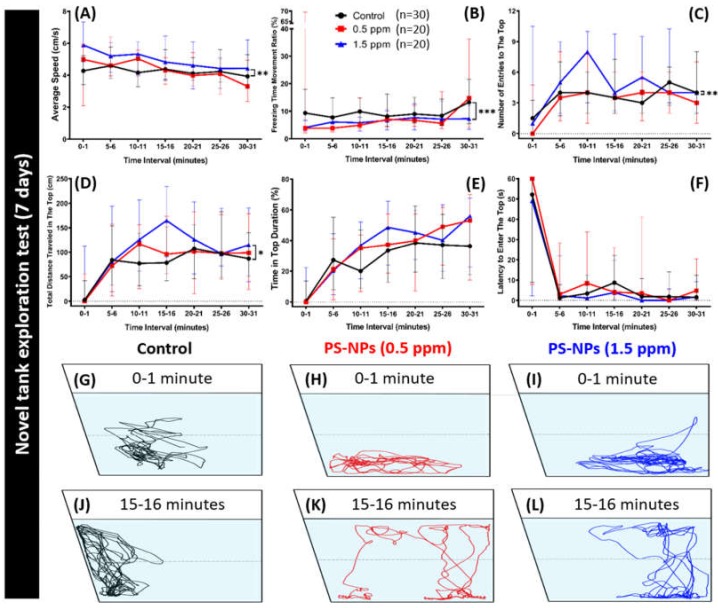Figure 2.
Novel tank behavior endpoints comparisons between control and polystyrene nanoplastics (PS-NPs)-exposed zebrafish groups after a ~7-day exposure. (A) Average speed, (B) freezing time movement ratio, (C) number of entries to the top, (D) total distance traveled in the top, (E) time in top duration, and (F) latency to enter the top were analyzed. The 1 min. locomotion trajectories for the control, 0.5 and 1.5 ppm PS-NPs exposed fish in the novel tank test were presented in (G to L), respectively. The black line represents the control group, the red line represents the low concentration PS-NPs group (0.5 ppm), and the blue line represents the high concentration PS-NPs group (1.5 ppm). The data are expressed as the median with interquartile range and were analyzed by a Kruskal–Wallis test, which continued with Dunn’s multiple comparisons test as a follow-up test (n = 30 for control; n = 20 for each PS-NPs-exposed group; * p < 0.05, ** p < 0.01, *** p < 0.001).

